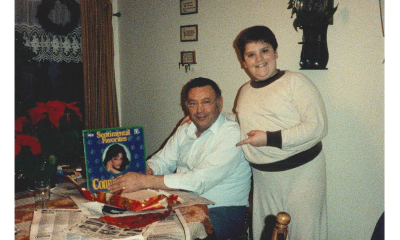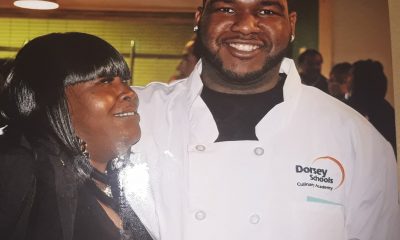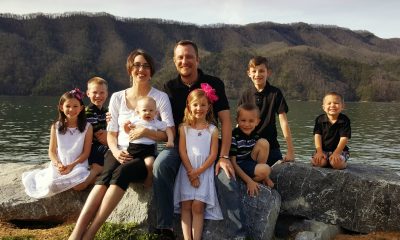by Shandi Pace
Kathy Barnard and Natalie Richardson became united by their diagnosis of late-stage skin cancer. Kathy was given three to six months to live, while Natalie had to receive surgery to remove a mole. Their stories become intertwined by working together at the Save Your Skin Foundation to educate the public on melanoma and non-melanoma skin cancers.
As a British Columbia native, Kathy spent her whole life outdoors. She was regularly playing sports and would spend several hours a day oiled-up outside for a tan. Kathy’s battle with skin cancer started in 2003. As she was getting ready to play softball, she discovered a mole on her back, a lump on her left arm and that her nose was peeling. Kathy’s niece prompted her to get the mole on her back checked, as that is often a sign of cancer.
The diagnosis for Kathy’s mole was that it was fatty tissue and that she didn’t need to worry about it. Since she was a regular sun tanner, she continuously went for checkups to see if anything had changed. When a second lump on her arm appeared, she went back to the doctor for biopsies and was told she had stage 4 metastatic melanoma.
At the time, there was no real treatment for melanoma. Kathy insisted on receiving something to get through her diagnosis. The first type of treatment she took was self-injected and lasted 365 days. She was often tired and only got out of bed to coach her daughter’s softball team. Although the success rate for treatments was very low, it worked for Kathy.
In 2005, she went in for a chest X-ray and a routine checkup, only for the doctors to find a 14cm mass in her left lung. The surgeon wanted to take her entire lung out to get rid of the cancer. Kathy’s oncologist, knowing her love of sport, said they would need to see where the cancer had spread. This time, the cancer was back, and it had spread to her lung, liver, bone, adrenal gland and kidney. At this point, she was given three to six months to live.
To get through this bout of cancer, Kathy discovered a clinical trial given in the United States that seemed to work for certain patients. She had to find a centre that could administer the treatment and discovered the Cross Cancer Institute in Alberta. There, she received four rounds of treatment. The side effects were harsh, but she had a complete response. At the end of 2005, all the tumours had disappeared.
The cancer came back again in 2007. The tumour was successfully removed, but Kathy had to go on another clinical trial. She had four more rounds of that and has since had no evidence of disease. “I’m one of the very very lucky ones,” Kathy said.
Kathy and her family knew they had to do something to help others experiencing the same thing. Together, she worked with her oncologist to start the Save Your Skin Foundation. The foundation has grown across Canada and around the globe.
Natalie was 37 years old when she discovered the mole on her hip had turned black, changed shape and got bumpy. She was also always outside and in the water during the summer. As a busy working mother, Natalie continued to put off getting the mole checked, but her daughter kept insisting she visit the family doctor. After a checkup, Natalie’s doctor told her she needed emergency surgery.
Two days later, Natalie had the tumour removed and had a sentinel lymph node biopsy. This surgery confirmed it was stage 3B melanoma that had spread to her lymph nodes. Three weeks later, she was in Sunnybrook Hospital in Toronto for lymph node dissection surgery.
Natalie was able to get into a clinical trial that uses your immune system to fight melanoma and cancer. After 68 weeks of treatment, she had no evidence of disease and has been disease-free for five years. “It was a really tough time,” Natalie said.
Like most skin cancer patients, Natalie struggled with living her life after treatment. One day, she was flipping through a magazine in her oncologist’s office when she came across an article about Kathy and the Save Your Skin Foundation. When Natalie got home, she looked up the foundation, called Kathy and began volunteering for Save Your Skin doing advocacy and awareness initiatives. Natalie also started writing blogs for the foundation, which led Kathy to hire Natalie as a project coordinator and then as a managing director.
At Save Your Skin, Kathy monitors patients closely since most skin cancer patients call when they get diagnosed with skin cancer and after the end of their treatments. Sher herself got depression five years after the fact because that’s when her treatments ended.
On an ongoing basis, Save Your Skin has educational webinars to train and educate patients, oncologists, surgeons, dermatologists, and other health care officials. Get treatments and clinical trials in Canada as quickly as possible.
As skin cancer is increasing in younger adults, Kathy wants others to be more prepared when outdoors. Kathy is now a smarter outdoor athlete than before. “I don’t say you have to give up what you love, you just have to be safer in what you love.”
For more information on Kathy, Natalie and Save Your Skin, check out their website.
Support us by driving awareness!
Subscribe to our YouTube channel at YouTube.com/GrapGrief.
Follow us on Facebook at Facebook.com/GrapGrief and on Instagram at Instagram.com/GrapGrief.






